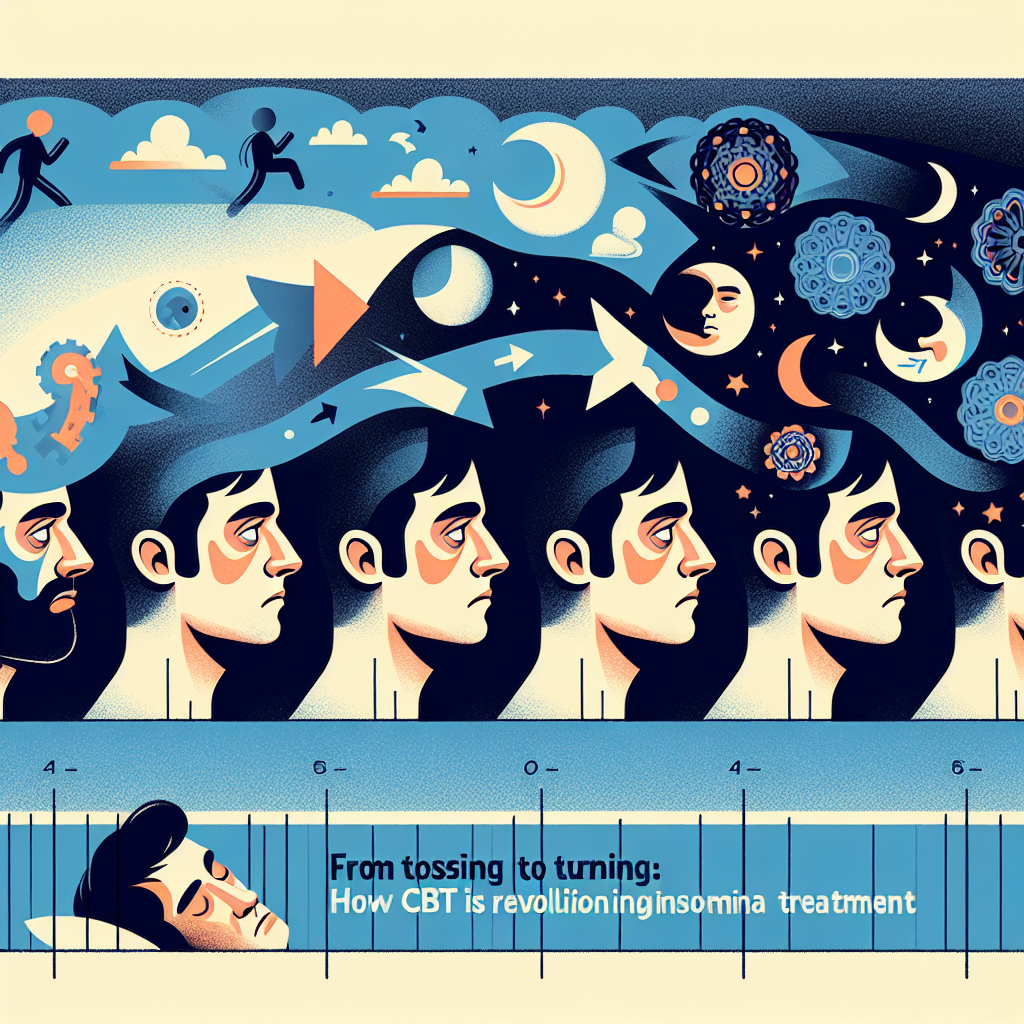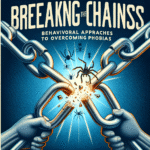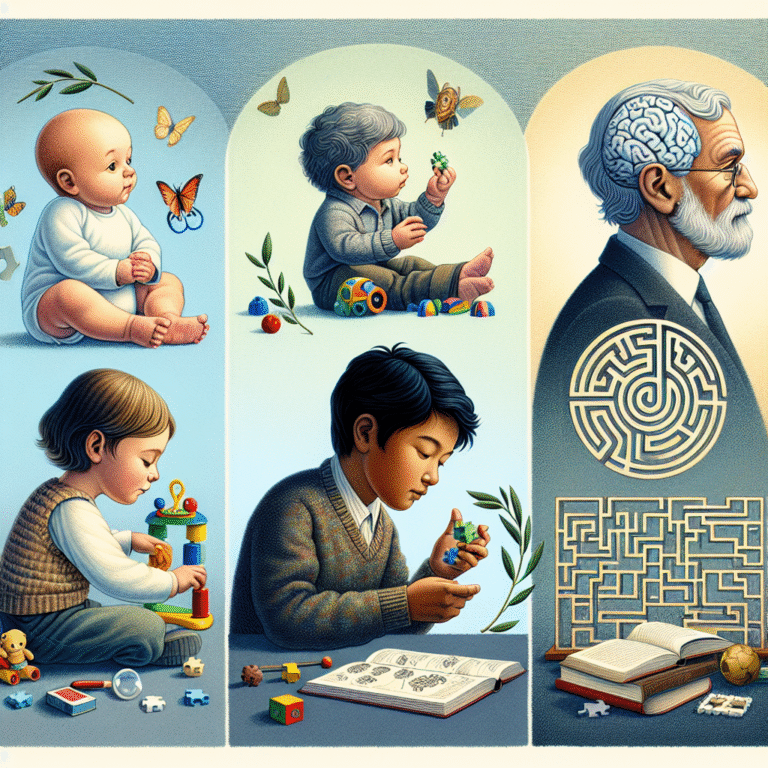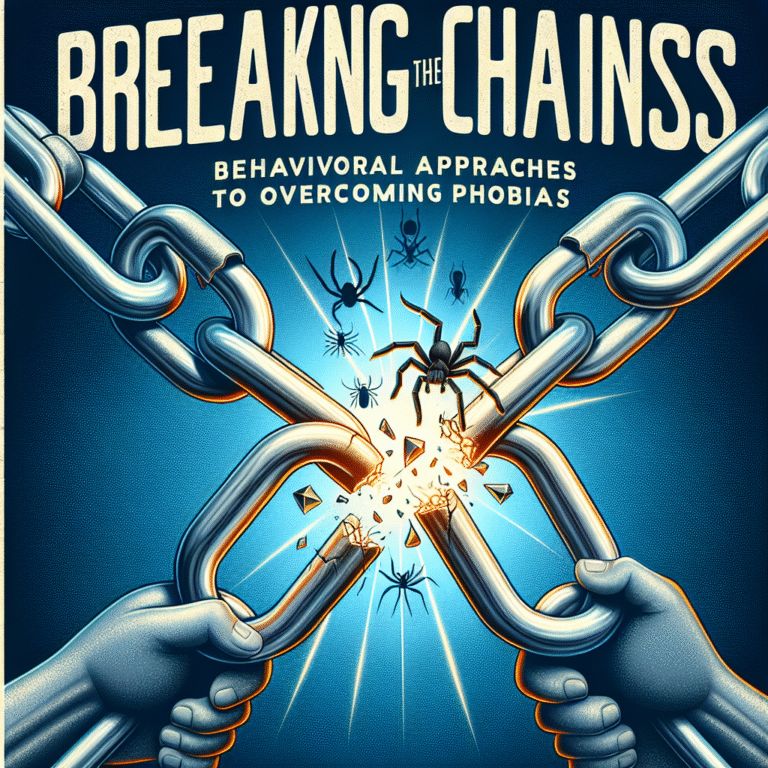
From Tossing to Turning: How CBT is Revolutionizing Insomnia Treatment
Introduction: The Sleep Crisis
As night falls and the world quiets down, millions toss and turn, trapped in a cycle of insomnia that leaves them exhausted and frustrated. This prevalent issue isn’t merely about counting sheep; it’s a deep-rooted struggle with sleep that affects mental and physical health, productivity, and overall quality of life. "From Tossing to Turning: How CBT is Revolutionizing Insomnia Treatment" explores how Cognitive Behavioral Therapy (CBT) offers a new dawn for those languishing in sleepless nights.
With studies indicating that nearly 30% of adults experience insomnia at some point, understanding effective treatments is crucial. CBT is emerging as a scientifically-backed solution that empowers individuals to reclaim restful nights. This article offers insights into how CBT works, its real-world applications, and why it could be the game-changer for insomnia sufferers.
Understanding Insomnia
What Is Insomnia?
Insomnia is more than just having trouble falling asleep. It can manifest as difficulty initiating sleep, maintaining sleep, or waking up too early. Notably, the Centers for Disease Control and Prevention (CDC) reports that insufficient sleep has been linked to a host of health issues, including obesity, diabetes, and anxiety disorders.
The Psychophysiological Model
To understand insomnia’s complexity, we employ the psychophysiological model. Here, it becomes evident that anxiety about sleep can create a vicious cycle. Instead of just being a physiological condition, insomnia has a significant psychological component, which is where CBT can step in to make a difference.
CBT: The Revolutionary Approach
What Is Cognitive Behavioral Therapy?
Cognitive Behavioral Therapy (CBT) is a therapeutic approach focused on identifying and modifying negative thought patterns and behaviors. It breaks down complex emotions and irrational beliefs to help individuals confront their challenges systematically. Commonly utilized for anxiety and depression, CBT is now gaining traction in the realm of insomnia treatment.
How CBT Works for Insomnia
-
Cognitive Restructuring: This involves identifying negative thoughts related to sleep (like "I’ll never be able to sleep tonight") and challenging their validity.
-
Sleep Restriction: Surprisingly, spending too much time in bed can worsen insomnia. CBT often prescribes a sleep schedule that restricts time in bed to the actual time spent sleeping.
-
Stimulus Control: This method encourages individuals to associate the bed with sleep rather than wakefulness by establishing strict rules. For instance, if someone can’t sleep, they should get out of bed until they feel sleepy.
- Relaxation Techniques: Incorporating mindfulness and relaxation strategies helps reduce anxiety related to sleep.
Why CBT is Different
Unlike medications that often come with a risk of dependency and side effects, CBT is a structured treatment that addresses the underlying thoughts and behaviors contributing to insomnia. It has been shown to have lasting effects even after treatment ends.
Case Studies: Real-World Applications
Case Study 1: Emily’s Transformation
Emily, a 34-year-old teacher, had struggled with insomnia for five years. Her sleep issues stemmed primarily from work-related anxiety. After six weeks of CBT, she noted a 75% reduction in her insomnia symptoms. Cognitive restructuring helped her manage her anxieties regarding job performance, allowing her to focus on healthy sleep habits instead of her worries.
Analysis: Emily’s case demonstrates how CBT can address anxiety—one of the core components of insomnia.
Case Study 2: Mark’s Success Story
Mark, a 45-year-old software engineer, had resigned himself to nightly sleep aids. Through CBT, he learned sleep restriction techniques and stimulus control. By the end of the program, he was falling asleep within 20 minutes without any sleep medications.
Analysis: Mark’s transformation illustrates how CBT’s behavioral strategies can substantially impact sleep quality, leading to a drug-free lifestyle.
The Evidence Behind CBT
Research has consistently supported CBT’s efficacy. A meta-analysis published in "The Journal of Clinical Psychiatry" indicated that CBT can drastically reduce symptoms of insomnia. This aligns with the principles behind "From Tossing to Turning: How CBT is Revolutionizing Insomnia Treatment."
Table: Comparative Effectiveness of Treatments
| Treatment Method | Effectiveness (Improvement %) | Risk of Side Effects |
|---|---|---|
| CBT | 70-90% | Low |
| Sleep Medications | 40-60% | High |
| Over-the-Counter Aids | 30-50% | Moderate to High |
This table illustrates that while medication provides temporary relief, CBT provides a longer-lasting solution with minimal side effects.
Implementation of CBT in Insomnia Treatment
Steps for Facilities
-
Training for Therapists: To ensure effective CBT delivery, therapists must be adequately trained in insomnia-specific CBT techniques.
-
Insurance Coverage: Improving accessibility will involve including CBT for insomnia in healthcare plans.
- Telehealth Options: Virtual therapy sessions can make CBT accessible, adding flexibility and reach to insomnia treatment.
Home Implementation
For individuals seeking immediate relief, online CBT resources and self-help books provide valuable information. However, personal guidance from professionals is advisable for those facing severe symptoms.
Conclusion: Sleep Well, Live Well
"From Tossing to Turning: How CBT is Revolutionizing Insomnia Treatment" highlights a paradigm shift in how we approach insomnia. While many continue to suffer in silence, the evidence supporting CBT as a sustainable and effective treatment method motivates us to take action.
It’s essential to remember that good sleep is a cornerstone of good health. By addressing the cognitive and behavioral roots of insomnia, CBT opens the door to restful nights and vibrant days.
Actionable Insights
-
Explore CBT: If you’re struggling with insomnia, consult with a mental health professional trained in CBT.
-
Start Small: Try implementing one technique from CBT—noticing how your sleep patterns improve can be an incentive to continue.
- Educate Yourself: Invest time in reading books or attending workshops on CBT to arm yourself with knowledge.
FAQs
1. What is the success rate of CBT for insomnia?
CBT has a success rate between 70-90%, showing significant improvement in insomnia symptoms.
2. How long does CBT for insomnia usually take?
Most CBT programs for chronic insomnia last between 4 to 8 weeks with weekly sessions.
3. Can I practice CBT techniques on my own?
Yes, there are many resources available for self-guided CBT, but professional guidance may enhance the effectiveness.
4. Are there any side effects to CBT?
CBT is typically free from side effects, unlike medications that can lead to dependency or withdrawal symptoms.
5. Is CBT suitable for everyone with insomnia?
While CBT is effective for many, severe cases or those with underlying conditions may require a comprehensive treatment plan.
By understanding "From Tossing to Turning: How CBT is Revolutionizing Insomnia Treatment," you take the first step toward conquering those restless nights. The journey to restorative sleep is within reach—let’s turn it around together.















